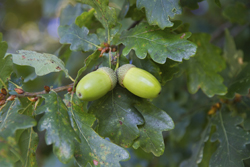Diversity and gene flow help oak thrive
Funded by the EU, RELICTOAK investigated a series of 23 low-latitude marginal populations of Quercus robur (Q. robur) in central Spain. The species is a wide-spread European forest tree commonly known as the Pedunculate oak. Scientists studied how genetic diversity was distributed and transmitted across these populations in order to discover how they maintained their genetic diversity and viability through several ice ages. As gene dispersal was a key part of this process, researchers studied historical and contemporary gene flow at three levels. They were: within populations, among populations, and between species whereby hybridisation with the more common Quercus pyrenaica (Pyrenean oak) was investigated. A comparison of Q. robur genotypes with those of the Q. pyrenaica revealed that hybridisation between the two species is not uncommon. This could explain the observed high diversity and weak geographical structure of Q. robur populations. Researchers found that long-distance gene flow through pollen dispersal was extensive in Q. robur populations. As a result, even the smallest stand of trees produce abundant crops in some years and display continual regeneration. An additional study into the link between populations and landscape-scale patterns of pollen gene flow revealed that acorn size, a parameter that affects seed dispersal, germination and seedling growth, is determined by the mother tree rather than the population of origin. Project members demonstrated that efficient pollen exchange between small and isolated Q. robur populations, aided by hybridisation with the much more abundant Q. pyrenaica, enabled the examined stands of oak to sustain a high genetic diversity and reproductive potential. The diversity and viability of Q. robur populations at the edge of their range, together with their potential to acquire genes from the more drought-resistant Pyrenean oak could provide a powerful mechanism for adapting to a warmer and drier future climate. The work conducted by RELICTOAK will provide valuable data for developing appropriate ecologically based strategies for conserving and managing relict populations in the face of a changing, drier climate.







